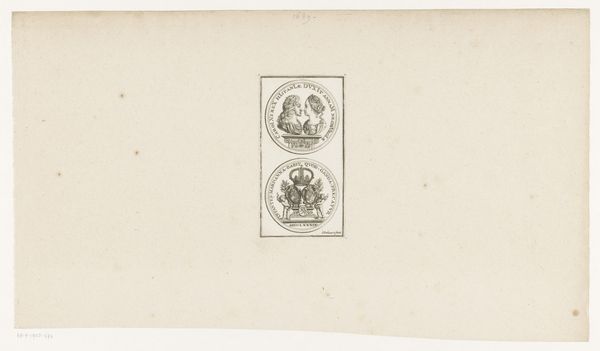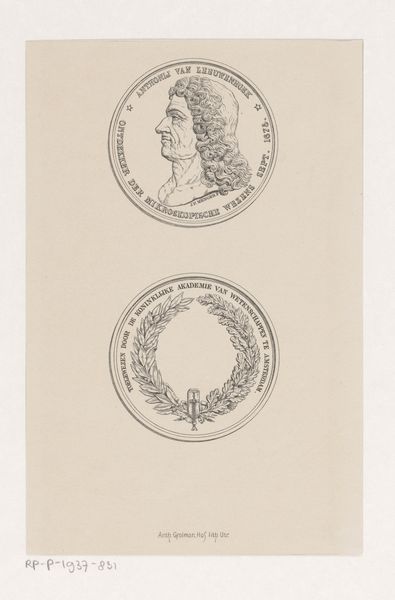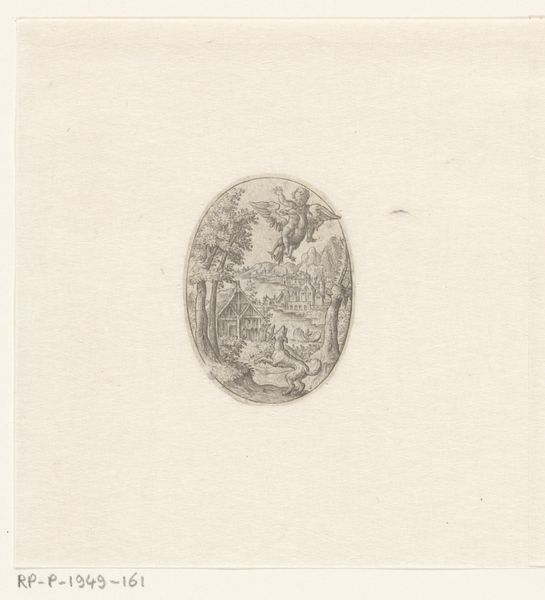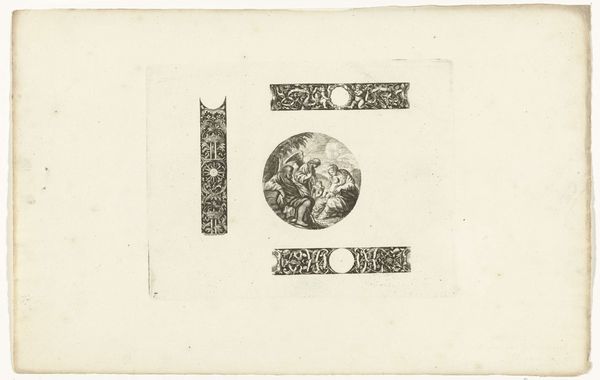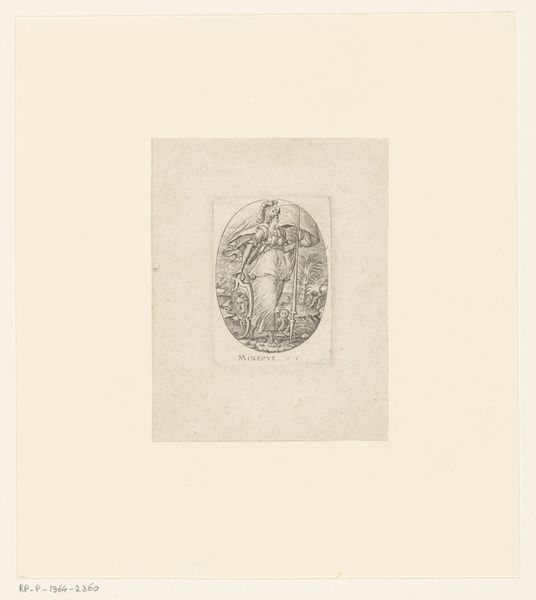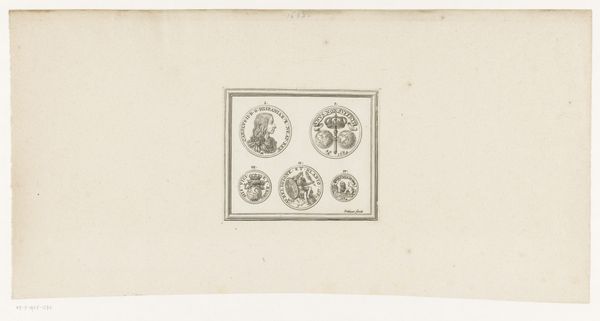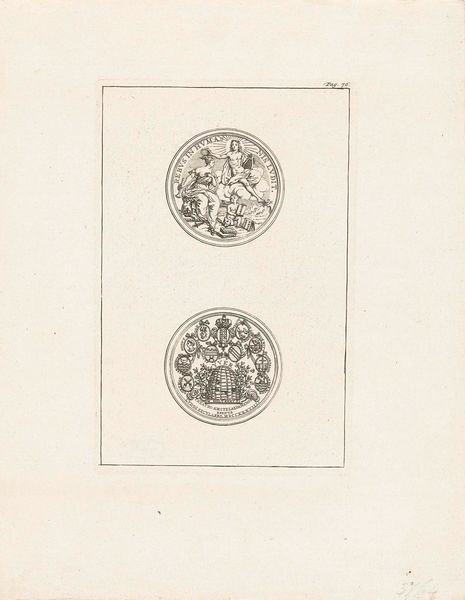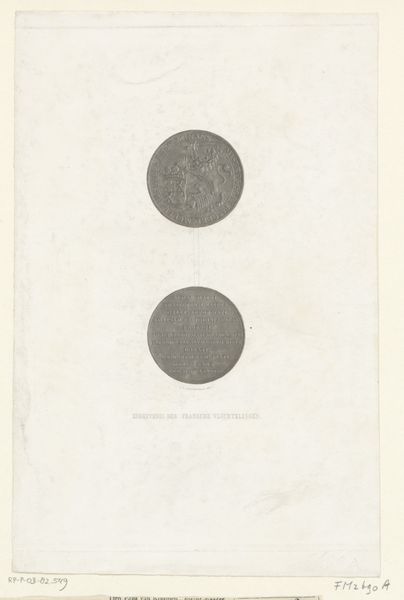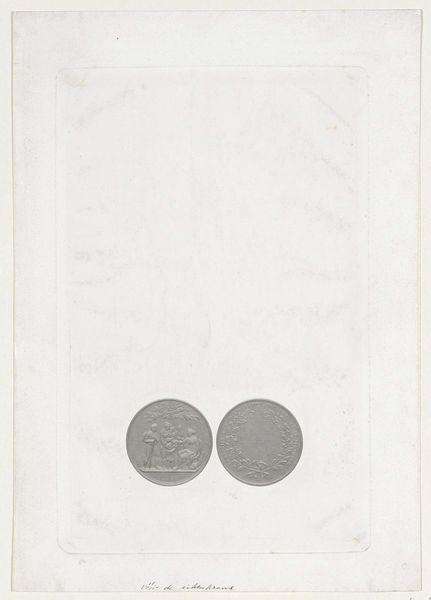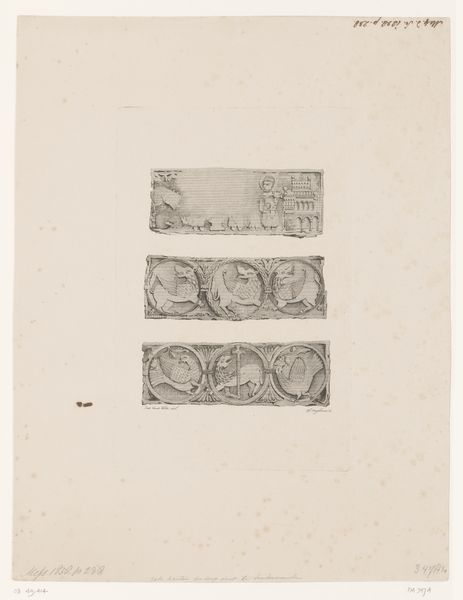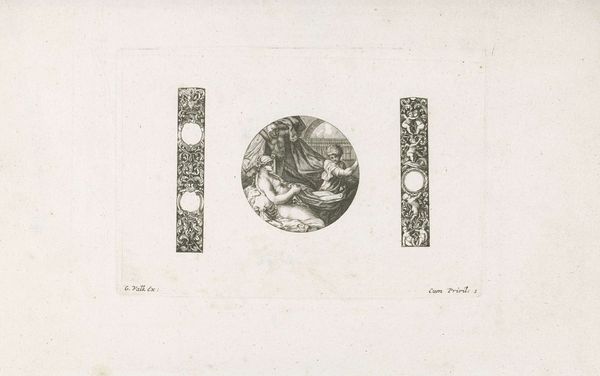
print, engraving
# print
#
old engraving style
#
geometric
#
ink colored
#
history-painting
#
engraving
Dimensions: height 107 mm, width 161 mm
Copyright: Rijks Museum: Open Domain
Editor: Here we have "Penning 208 jaar na Unie van Utrecht (1579), 1787" by Charles Onghena, an engraving made sometime between 1825 and 1886. It looks like a print of two sides of a commemorative coin. The precision is striking. What jumps out at you about this engraving? Curator: What interests me most is not necessarily the *image* of the coin, but rather the means of its reproduction and dissemination via engraving. How does this comparatively inexpensive method democratize access to imagery originally reserved for the wealthy or powerful? Consider how printmaking alters the cultural value of commemoration. Editor: That's a great point, making it more accessible to the masses changes how it's valued and consumed. Were engravings like this common at the time? Curator: Absolutely. They served a crucial role in circulating visual information. Ask yourself: What labor was involved? Whose stories were considered worthy of wider circulation through printmaking? The materiality of ink and paper connects directly to broader networks of trade, colonialism, and evolving national identities. Editor: So, instead of seeing just a historical record, we should think about the social and economic forces that made the print itself possible and popular? Curator: Precisely. The very act of reproduction transformed its cultural function. One can ponder the difference between owning an exclusive coin versus a widely available printed reproduction. Consider the impact on notions of authenticity and value. Editor: I never thought about it that way before! Focusing on the engraving itself, its production and audience, gives it so much more depth. Curator: Indeed. Shifting our gaze toward material conditions lets us appreciate overlooked power dynamics at play.
Comments
No comments
Be the first to comment and join the conversation on the ultimate creative platform.
